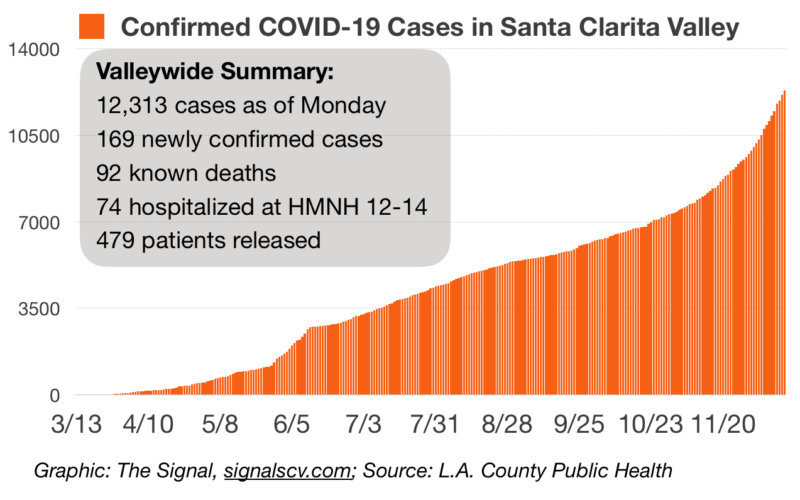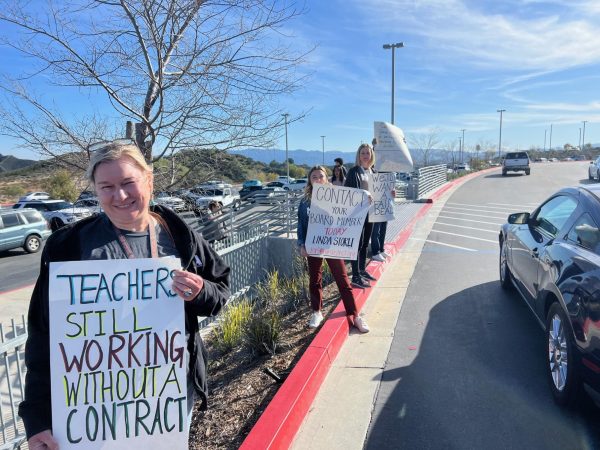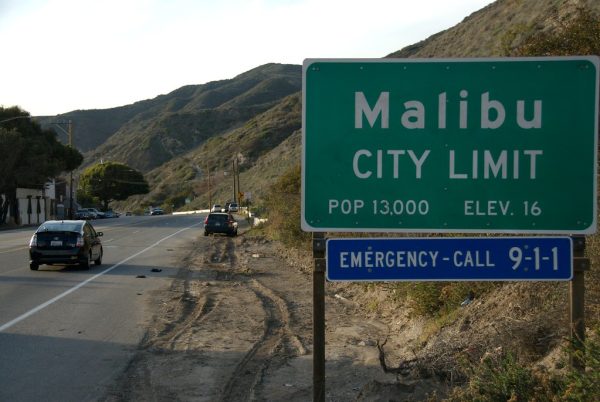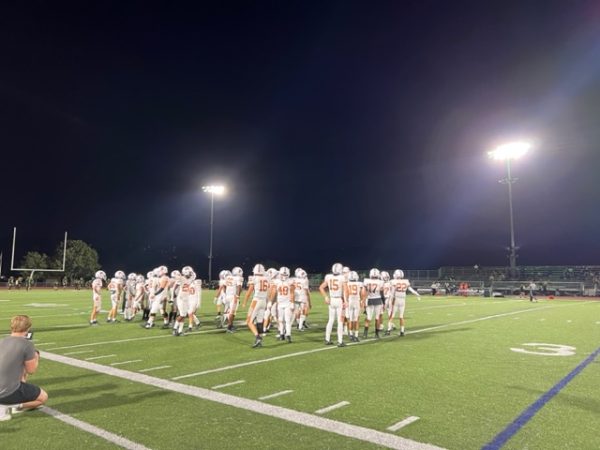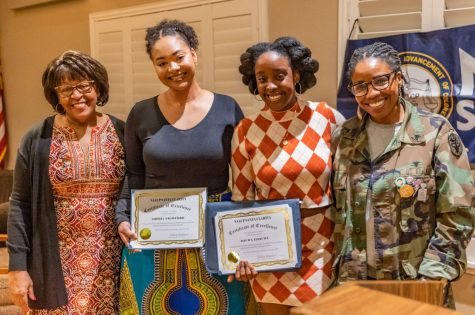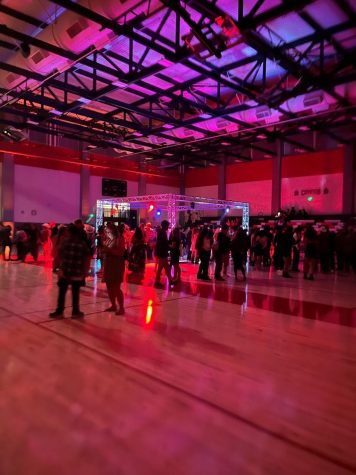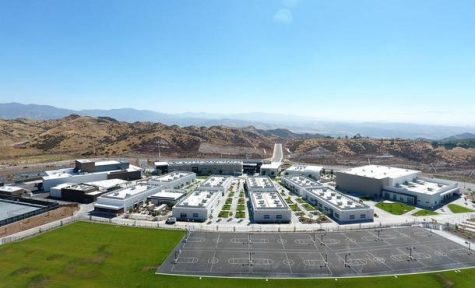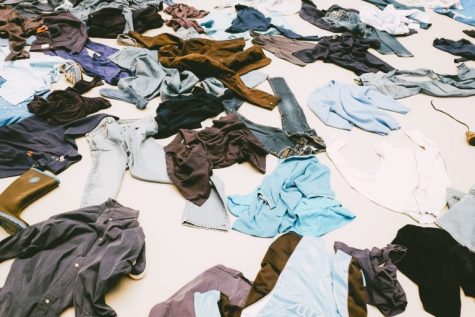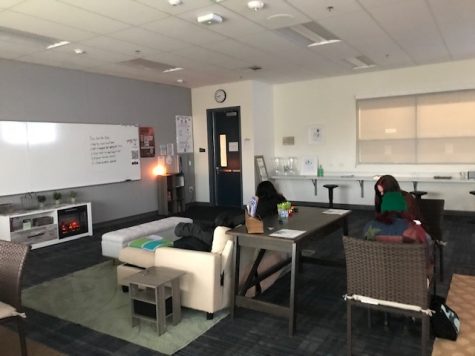New COVID Dashboard & “Pause” of District Campus Use
Hart District launches COVID dashboard reporting 46 cases in the school system.
December 16, 2020
This month the William S. Hart Union School District launched a COVID-19 dashboard on the district website. The dashboard contains data dating back to October and is regularly updated to inform the community of confirmed COVID cases of anonymous students and staff who were “physically present on a District Campus within 14 days of receiving a positive COVID-19 test.” As of today, the dashboard shows 46 cases district-wide including 14 infected students and 32 staff members of which 2 are Castaic High School staff. The identities of those who are infected are kept confidential for privacy reasons.
A source close to the paper confirmed that the Hart District was contacted by multiple people who were concerned or curious about the number of COVID cases in the district schools. In an effort to provide more transparency, the dashboard was created. The district released the dashboard so everyone with ties to the school district can stay informed and accurately discern any current risks.
The rising numbers, recorded through this dashboard, have become particularly relevant recently as the County of Los Angeles Department of Public Health released an updated health order on November 30, which includes the new protocol for reopening K-12 schools. Pursuant to the Temporary Targeted Safer at Home Health Officer Order, if a school has an outbreak of COVID-19, which is defined as “3 or more cases within a span of 14 days,” they are required to close for 14 days. Even though school has remained online for most students in Hart District so far this year, teachers and administrators, as well as small cohorts of students with special circumstances, have been coming to campus. Sports conditioning practices have been held in-person in recent months as well. The case count, which dates back to October, is particularly relevant to highly populated campuses with larger case counts like Rio Norte and La Mesa Junior High; while high schools like Valencia, Hart, and Golden Valley are also seeing growth in the number of cases.
This Monday, the Hart District Superintendent, Mike Kuhlman, issued an email with instructions for all students who have been coming to campus to complete the semester from home and for athletic conditioning practices to stop for now. After citing the recent rates of growth in transmission of COVID in our community, he states that the district decided to “reduce the number of individuals on our campuses” by taking a “pause [of] all in-person student support” until the end of the semester. Kuhlman highlights in the email that the district was not ordered to do so by the LADPH, and that “the community should not draw the conclusion that our campuses are inherently unsafe” but rather that the district is taking the precautionary measures to ensure student and administrative safety.
Cases in Santa Clarita Valley, as of Monday, crest the 12,000 mark with nearly 100 deaths recorded. In LA County there were just over 500,000 cases as of Friday and the county averaged nearly 9,000 COVID cases daily from November 13th to December 9th. This spike in cases, which has been mirrored across the nation as we plunder through the third wave of this pandemic, led to the necessary revision of the Safer at Home Health Order by the State of California.
The lack of coordination across the nation, nearly monthly changes to public health orders, and slight variations of different elements in each order has led to widespread confusion—a trend seen across the nation at this time. According to the Revised Temporary Targeted Safer at Home Health Officer Order, bars, restaurants (excluding takeout but including indoor and outdoor seating), and indoor playgrounds must remain closed. However, outdoor playgrounds (in accordance with the County Public Health Protocols of Playgrounds) may remain open. Additionally, now personal care services like salons and tattoo parlors are closed and grocery stores must operate at 35% capacity, and shopping malls and other retail businesses at 20% capacity. This revised health order was instated on December 9th and will last until the 27th. The slight variations and short duration of these orders lead to possible confusion. If citizens do not understand the specifics of these orders they are less likely to follow them.
As the virus continues to rage, ignorance and uncertainty surrounding these health protocols may enable the virus to spread further. With no national action plan for controlling the spread of the virus and no mask mandate from the White House; counties and states have been gradually creating their own varying health protocols—some more successful than others.
As America continues to struggle with controlling the pandemic on a public level, scientists have made a major and much-anticipated breakthrough. On Friday, the Food and Drug Administration (FDA) issued an emergency use authorization (FUA) of the Pfizer vaccine. The first shipments of the vaccine were distributed to states on Sunday and are currently arriving in hospitals across the country. America will be challenged to unify and create structure to lead the nation through to the end of this unrelenting pandemic, but hope is on the horizon.

